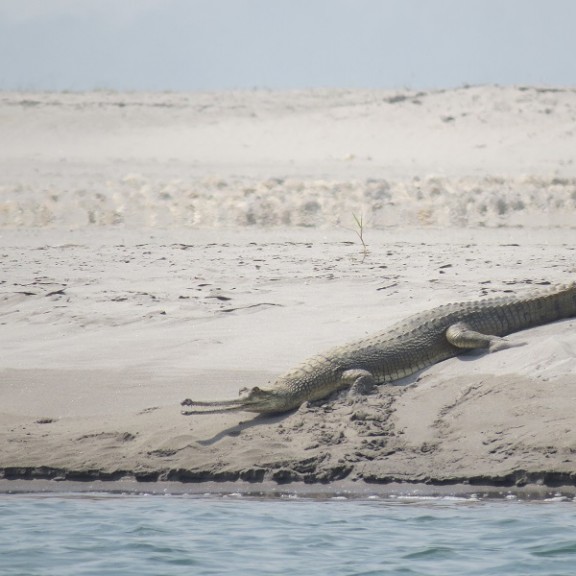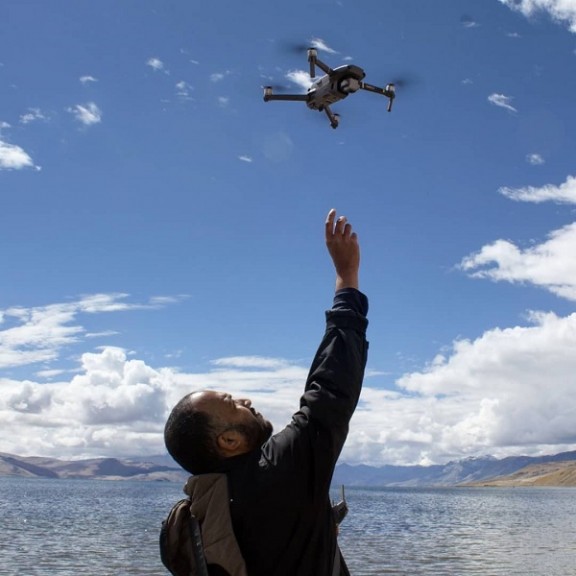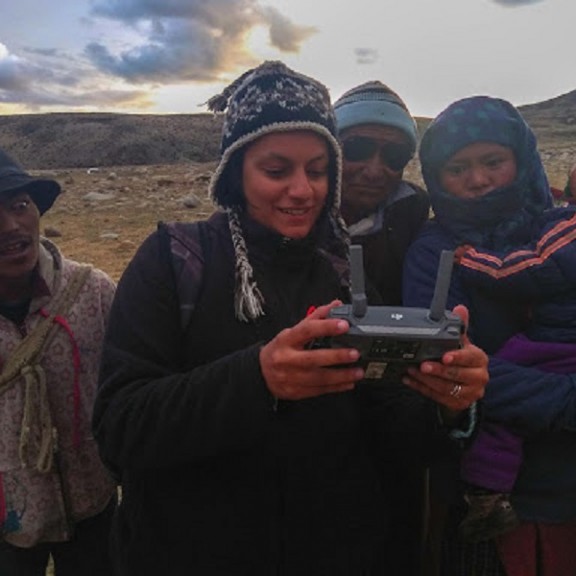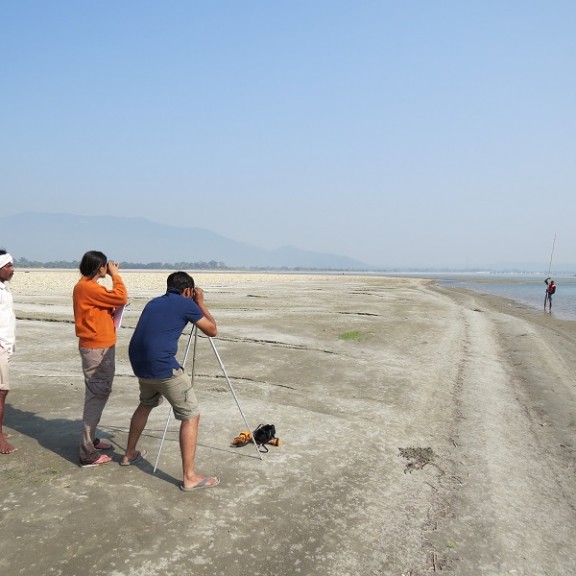
River Dolphin and Gharial

Monitoring the effects of river flow regulation on river dolphins and gharials in India
The riverine habitats of the Ganges river dolphin and gharial crocodile are threatened by water flow regulation through dams and barrages. Human demands for freshwater compete strongly with survival needs of these species. Dry-season flow regulation leads to sudden changes in depth, water temperatures, and bank erosion which leaves the dolphins at risk of being stranded/trapped in shallow river channels, and gharials of facing breeding failures. To understand changes through dry-season river flow regulation and their immediate effects for the species better, the project aims to collect large-scale and high-resolution data of the species and river flow management of the Gandak River, a tributary of the Ganges River. These data can help to design effective monitoring that enables swift communication in order to to minimize mortality or injury risk to river dolphins or gharials as a result of river flow management.
Species: South asian river dolphin (Platanista gangetica), Gharial (Gavialis gangeticus)
Region: India
Implementing partner: Technology for Wildlife, Wildlife Conservation Trust India
Funding period: Dec 2021 - March 2023
Project goals
- To understand fine-scale movements and responses of both species by using different monitoring methods
- To understand the impacts of river regulation on the species
- To create recommendations and feedback to conservation and management authorities for the addressed area, the Gandak River basin
Planned activites
- To conduct visual boat, acoustic and drone surveys
- To use tagging of animals in aerial imagery, together with spatial and statistical methods to understand the relation between animal behaviour and river water flow characteristics and management
- To meet and liaise with government authorities to create ecologically sensitive river flow releases and decision rules
- Communicating the results to the scientific and public audience to create a proof-of concept that can be replicated for other river flow management situation



